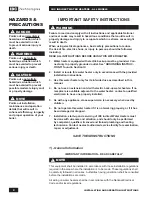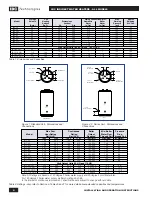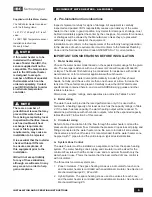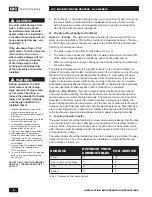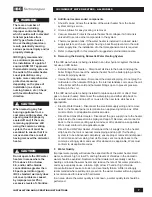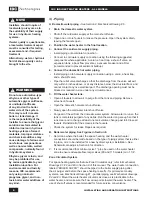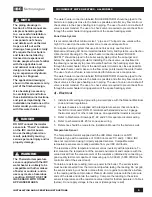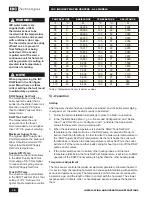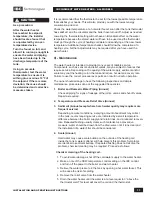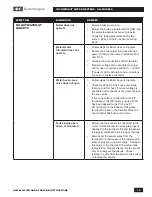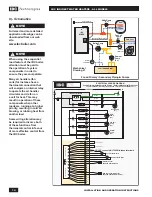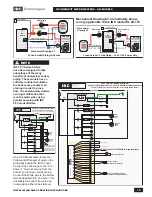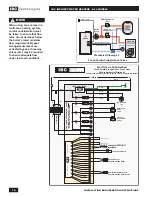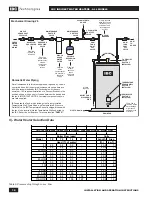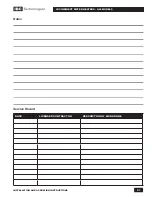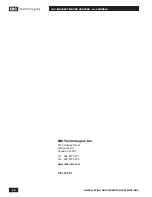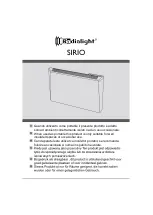
11
INSTALLATION AND OPERATION INSTRUCTIONS
IBC INDIRECT WATER HEATERS - ALL MODELS
It is recommended that the thermostat be set for the lowest possible temperature
that satisfies your needs. This will also provide you with the lowest energy
consumption and cost.
Check the water temperature at a hot water faucet soon after the tank thermostat
has satisfied, and the circulator and the boiler have turned off. Adjust as needed.
Lowering the thermostat setting will not have an immediate effect on the water
temperature because the stored water will have to be used and the thermostat
must go through the cycle of heating cold water and satisfying at the new, lower
temperature. Additional temperature checks should follow the completion of a
heating cycle. Further adjustments may be required after you have used the
water heater.
6) - Maintenance
The water heater is intended to provide many years of reliable service.
Components, such as sensors and relief valves, may be subject to failures that
require service. Depending on the quality of the water supply, sediment and/or
scale may coat the heating coil in the tank and reduce hot water recovery rate.
Failure to use the correct procedures or parts can result in unsafe operation.
The owner should arrange to have the following inspections and simple
maintenance procedures done at the suggested frequencies.
1. Boiler and Domestic Water Piping (Annual)
Check all piping for signs of leakage at the joints, unions and shut-off valves.
Repair as required.
2. Temperature and Pressure Relief Valve (Annual)
3. Sediment (Annual except where harsh water quality may require more
frequent service)
Depending on water conditions, a varying amount of sediment may collect
in the tank. Levels requiring service are indicated by a small temperature
difference between the boiler supply and return lines, and a reduced recovery
rate. Repeated flushing usually clears such material. As a preventive
measure, water should be drawn from the drain valve until it runs clear and
the installation of a water filter should be considered.
4. Scale (Annual)
Hard water may cause scale buildup on the outside of the heating coil
inside the tank. A water softener will help prevent this problem. Symptoms
are identical to sediment buildup. If repeated flushing does not resolve the
problem, chemical cleaning may be required. Proceed as follows:
Chemical cleaning of the heating coil:
1. To avoid water damage, shut off the cold water supply to the water heater.
2. Make a note of the DHW temperature control setting on the IBC control,
and turn off the power to the boiler and water heater.
3. Relieve the water pressure in the tank by opening a hot water faucet. This
will reduce the risk of scalding.
4. Remove the relief valve from the water heater.
5. Drain the water heater until the water is at a level equal to 3” above the
thermostat well. This level will cover the coil and the thermostat.
CAUTION
As a precaution:
After the water heater
has reached its setpoint
temperature, the installer
should locate a faucet that
is unprotected by an over-
temperature device.
Turn the faucet on full, and
allow it to run long enought to
ensure the water and piping
have been heated up to the
discharge temperature of the
tank.
Using an accurate
thermometer, test the water
temperature to ensure it is
withing plus or minus 10°F of
the setpoint. If there is more
deviation, the cause should
be determined and corrective
measures taken.


